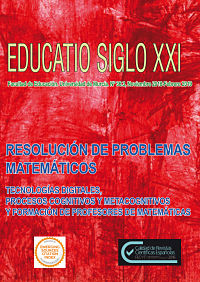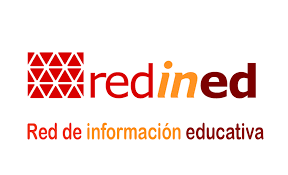Experimentar con TIC en la formación inicial de profesores
Resumen
En una sociedad en la que las tecnologías poseen cada vez mayor relevancia, son varios los argumentos que justifican su integración en la escuela. Efectivamente, el uso de las Tecnologías de la Información y Comunicación surge como una gran y valiosa posibilidad de cambio, ofreciendo al proceso de enseñanza-aprendizaje un nuevo soporte. Parece evidente que su uso constituye un hecho inevitable al que ningún docente debería permanecer indiferente. Esta es la finalidad del artículo, al preocuparse por la importancia de utilizar las TIC en el contexto de prácticum. Para ello, se presenta un relato de diez seminarios de practicum realizados en la Universidad de Trás-os-Montes e Alto Douro (Portugal), con futuros/as profesores/as de diferentes áreas de enseñanza básica y su potencial formativo. En este contexto, se recurre al uso de diferentes tecnologías para presentar herramientas susceptibles de ser usadas en las aulas,
mostrar su utilidad en la futura práctica pedagógica y dejar indicadores para que los futuros docentes pudiesen elaborar materiales pedagógicos digitales capaces de responder a sus intenciones didácticas y, también, a los ambientes de aprendizaje que crean conforme a sus características y estilos de aprendizaje. Se concluye con una reflexión sobre la pertinencia de estos seminarios y la utilidad de las TIC en el contexto del prácticum.
Descargas
-
Resumen1442
-
PDF797
Citas
Cardona Ossa, G. (2002). Tendencias educativas para el siglo XXI: Educación virtual, online y @Learning. Elementos para la discusión, en Edutec: Revista Electrónica de Tecnología Educativa, 15. Recuperado de: http://goo.gl/m4uHXi
Gallego-Arrufat, M.J. & Raposo-Rivas, M. (2016) (coords.). Formación para la educación con Tecnologías. Madrid: Pirámide.
Gomes, A. (2015). As Tecnologias da Informação e Comunicação no 1.º Ciclo do Ensino Básico: Possibilidades de Integração. (Tesis de Doctorado). Vila Real: Universidade de Trás-os-Montes e Alto Douro.
Karsenti, T. (2007). Comment s’articulent les facteurs qui influencent leur utilisation? En B. Charlier, y D. Peraya, (Ed.) Les technologies éducatives : une opportunité d’articuler les savoirsd’expérience et ceux issus de la recherche ? (pp. 157- 170).
Karsenti, T. (2004). Impact des TIC sur l'attitude, la motivation et le changement dans les pratiques pédagogiques des futurs enseignants. In M. Tardif et C. Lessard (Eds), La profession d'enseignant aujourd'hui: évolutions et perspectives internationales.
Kenski, V. (2003). Tecnologias e ensino presencial e a distância. Campinas: Papirus.
Larose, F., Grenon, V., Lenoir, Y., y Desbien, J.F. (2007). Le rapport des futurs enseignants à l’utilisation de l’informatique pédagogie : fondements et trajectoire longitudinale En B. Charlier y D. Peraya (Ed.), Les technologies éducatives : une opportunité d’articuler les savoirsd’expérience et ceux issus de la recherche ?(pp. 171- 188).
Lopes, N.; Escola, J. & Raposo-Rivas, M. (2015a). O QIM como recurso no ensino básico do norte de Portugal: Estudo de boas práticas. UT. Revista de Ciències de l’Educació, 2, 7-26. Recuperado de: http://goo.gl/g6Av7U
Lopes, N. (2015b). Quadro Interativo Multimédia: A Nova Janela para a aprendizagem no Ensino Básico – presença, usos e metodologias no Norte de Portugal (Tesis de Doctorado). Vila Real: Universidade de Trás-os-Montes e Alto Douro.
Meirinhos, M. (2000). A Escola Perante o desafio da Sociedade da Informação. In Encontro As Novas Tecnologias e a Educação - Instituto Politécnico de Bragança.
Oliveira, S. (2009). Estágios para Universitários: representações e implicações na inserção profissional dos jovens brasileiros e franceses. (Tesis de Doctorado). Escola de Administração da Universidade Federal do Rio Grande do Sul, Brasil.
Ponte, J. P. (1992). Concepções dos professores de Matemática e processos de formação. En: Educação Matemática: Temas de Investigação. Lisboa: IIE, (pp. 185 – 239).
Ponte, J. P., y Serrazina, L. (1998). As novas tecnologias na formação inicial de professores. Lisboa: Editorial do Ministério da Educação.
Prensky, M. (2001). Digital natives, digital immigrants. On the Horizon, 9(5), 1-6. Recuperado de: http://goo.gl/aWk1nF
Sarmento, A. (1994). O Processamento de Texto e o Ensino das Língua Estrangeiras. Porto: Edições Asa.
Souviney, R., y Saferstein, B. (1997). E-mail communication and clinical supervision: The Internet Project. Journal of Computing in Teacher Education Eugene, 14, (1), (pp. 21 – 27).
Toschi, M. (2002). Linguagens mediáticas na sala de aula e a formação de professores. En Didática e prática de ensino: interfaces com diferentes saberes e lugares formativos, Rio de Janeiro: DP&A, (pp. 265-278).
Viens, J., Peraya, D. y T. Karsenti (dir) (2002). Bilan et prospectives dela recherche sur la information initiale et continue des maitres à l`integration pédagogique des T.I.C., numèro thèmatique, Revue des sciences de l`éducation, 28 (2).
Yldirim, S. (2000). Effects of an educational computing course on preservice and inservice teachers: a discussion and analysis of attitudes and use. Journal of Research on computing in Education, 32 (4) (pp. 479-496).
Zabalza, M.A. (2011). El Practicum en la formación universitaria: el estado de la cuestión. Revista de Educación, 354, enero-abril, (pp. 21-43). Recuperado de: http://goo.gl/0IR5uD
Las obras que se publican en esta revista están sujetas a los siguientes términos:
1. El Servicio de Publicaciones de la Universidad de Murcia (la editorial) conserva los derechos patrimoniales (copyright) de las obras publicadas, y favorece y permite la reutilización de las mismas bajo la licencia de uso indicada en el punto 2.
2. Las obras se publican en la edición electrónica de la revista bajo una licencia Creative Commons Reconocimiento-NoComercial-SinObraDerivada 4.0 Internacional (texto legal). Se pueden copiar, usar, difundir, transmitir y exponer públicamente, siempre que: i) se cite la autoría y la fuente original de su publicación (revista, editorial y URL de la obra); ii) no se usen para fines comerciales; iii) se mencione la existencia y especificaciones de esta licencia de uso.
3. Condiciones de auto-archivo. Se permite y se anima a los autores a difundir electrónicamente las versiones pre-print (versión antes de ser evaluada) y/o post-print (versión evaluada y aceptada para su publicación) de sus obras antes de su publicación, ya que favorece su circulación y difusión más temprana y con ello un posible aumento en su citación y alcance entre la comunidad académica. Color RoMEO: verde.










